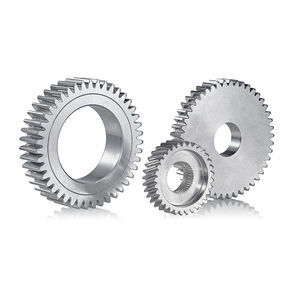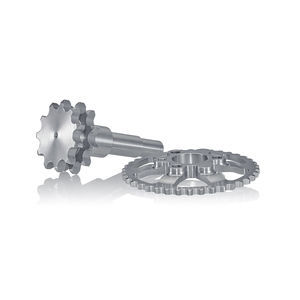
- Power Transmission - Mechanical components
- Mechanical Transmission
- Spur gear
- Zahnradfabrik Hänel GmbH & Co. KG

- Products
- Catalogs
- News & Trends
- Exhibitions
Spur gear helicaltransmissionprecision


Add to favorites
Compare this product
Characteristics
- Type
- spur
- Teeth
- helical
- Applications
- transmission
- Other characteristics
- precision
Description
We use high-tech Reishauer and Höfler gear grinding and finishing machines to manufacture precision planetary gears at our factory. The degree of operational smoothness and noise levels of planetary gears can be optimized by using special tools to modifying tooth geometries. Since all of the gears in planetary gear sets constantly mesh with high precision, these gears operate much quieter than sets of spur gears.
How planetary gears function
Planetary gears are used in planetary gearsets (also known as epicyclic gear trains) which are comprised of the following basic components: A sun gear with external teeth, a ring gear, and orbiting planet gears supported by a carrier. In appearance a planetary gearset resembles a solar system. A planetary gearset has a clear advantage over other configurations because the load and balance are carried by several planetary gears in the unit. Thus high levels of torque density are possible within a very small space.
The carrier holding the multiple planet gears serves as the driveshaft of the gearset. This gearset serves as the connection between the motor and the component to be set in motion – this component also is responsible for the transmission of the torque. Torque is the rotational equivalent of linear force. If the number of planetary gears is increased, the load is more evenly distributed among them and the torque is increased.
The planet gear is moved additionally by the rotation of the sun gear.
There are several different types of gearsets. The classic design configuration is called standard or the elementary epicyclic gear train. In reverse planetary gearing, the connecting drive is positioned coaxially.
Other Zahnradfabrik Hänel GmbH & Co. KG products
Products
Related Searches
- Straight-toothed sprocket wheel
- Chain sprocket wheel
- Helical gear
- Spur gear
- Metal sprocket wheel
- Steel sprocket wheel
- Precision shaft
- Shaft gear
- Cylindrical gear
- Precision gear
- Single shaft
- Transmission shaft
- Transmission gear
- Stainless steel sprocket wheel
- Internal-toothed gear
- Stainless steel gear
- Drive shaft
- Single sprocket wheel
- Triple sprocket wheel
- Flange sprocket wheel
*Prices are pre-tax. They exclude delivery charges and customs duties and do not include additional charges for installation or activation options. Prices are indicative only and may vary by country, with changes to the cost of raw materials and exchange rates.









